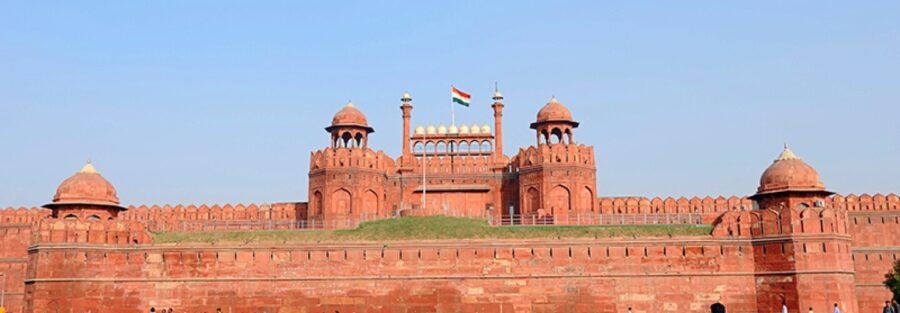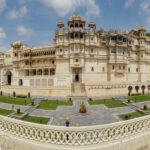The Red Fort, also known as Lal Qila, is a historic fort and UNESCO World Heritage Site located in Old Delhi, India. It stands as a prime example of Indo-Islamic and Mughal architecture and serves as a symbol of India’s rich cultural and architectural heritage.
Here are some key architectural features and aspects of the Red Fort:
Architectural Style: The Red Fort was built during the Mughal era, primarily during the reign of Emperor Shah Jahan in the mid-17th century. It exemplifies Mughal architecture, which is a fusion of Persian, Indian, and Islamic architectural elements.
Red Sandstone Construction: The fort gets its name “Red Fort” due to the extensive use of red sandstone in its construction. The walls, facades, and many structures within the fort are made from this material, giving the fort its distinct reddish hue.
Layout and Design: The Red Fort’s layout is organized around a series of courtyards and buildings, reflecting the typical Mughal design principles. The fort is enclosed by high walls, and within its premises are various palaces, halls, gardens, and other functional spaces.
Main Gate (Lahori Gate): The main entrance to the fort is known as the Lahori Gate. This imposing gate is decorated with intricate carvings, and its central archway is a prominent example of Mughal craftsmanship.
Chatta Chowk: Upon entering through the Lahori Gate, visitors are greeted by Chatta Chowk, a covered bazaar or market street. This area once hosted various merchants and traders, and its architectural details showcase Mughal artistry.
Diwan-i-Am (Hall of Public Audience): This is a grand open hall where the emperor would hold public audiences and address the concerns of the common people. The hall’s elegant design features a large central platform with a throne.
Diwan-i-Khas (Hall of Private Audience): This hall was reserved for private meetings and gatherings with important dignitaries. Its centerpiece is a famous marble canopy under which the emperor’s throne once stood.
Rang Mahal (Palace of Colors): This palace features intricate decorations and was used by the Mughal emperors’ wives. Its name “Rang Mahal” refers to the once-vivid colors that adorned its interiors.
Mumtaz Mahal: Named after Empress Mumtaz Mahal, this palace was designed as a pleasure pavilion and features delicate carvings and marble screens.
Moti Masjid (Pearl Mosque): Located within the fort, this mosque is built entirely of white marble and is known for its simplicity and elegance.
Sound and Light Show: The Red Fort hosts a nightly sound and light show that narrates the history of the fort and the Mughal era. The architecture is beautifully illuminated during these shows, adding a magical touch to the experience.
In conclusion, the Red Fort’s architecture is a captivating representation of Mughal splendor and aesthetics. Its use of red sandstone, intricate carvings, grand courtyards, and blend of Islamic and Indian architectural styles make it an enduring symbol of India’s cultural heritage and a testament to the architectural brilliance of the Mughal period.



